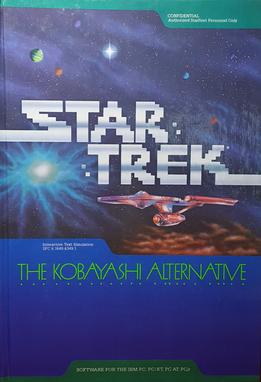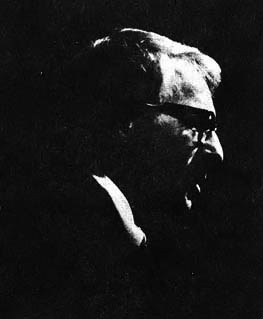Plot
At the ending of Fahrenheit 451, former Fireman Guy Montag is a fugitive, wanted for murder for killing his supervisor and stealing contraband books. The game takes place five years later. A pointless war has swept across the country, leading to martial law by the Firemen. Now an agent for the literary underground, Montag makes his way to New York. His mission is to break into the heavily guarded New York Public Library on 42nd Street. The books themselves were burned, but the contents had first been transferred to microcassette. The microcassettes need to be retrieved and uploaded into the Underground's information network. Along the way, he discovers that Clarisse McClellan, the young woman who inspired him to rebellion, is still alive.
Challenges for the player involve finding ways to alter one's appearance, fingerprints, and "chemindex" (body chemistry) in order to evade detection. Other issues arise in finding food to eat and safe places to rest. The player must also make contact with members of the Underground hiding in the city, through the use of a lighter and literary quotations.
In the end, Montag is able to break into the Central Library and meet up with Clarisse. The microcassettes are found and transmitted on the information network to resistance cells all over the world. While Montag and Clarisse achieve victory in saving the extensive collection of literature, it costs them their lives as firemen storm the office after the last cassette is transmitted, immolating them both.

Fahrenheit 451 is a 1953 dystopian novel by American writer Ray Bradbury. It presents a future American society where books have been outlawed and "firemen" burn any that are found. The novel follows in the viewpoint of Guy Montag, a fireman who soon becomes disillusioned with his role of censoring literature and destroying knowledge, eventually quitting his job and committing himself to the preservation of literary and cultural writings.
Infocom was an American software company based in Cambridge, Massachusetts, that produced numerous works of interactive fiction. They also produced a business application, a relational database called Cornerstone.
Interactive fiction, often abbreviated IF, is software simulating environments in which players use text commands to control characters and influence the environment. Works in this form can be understood as literary narratives, either in the form of Interactive narratives or Interactive narrations. These works can also be understood as a form of video game, either in the form of an adventure game or role-playing game. In common usage, the term refers to text adventures, a type of adventure game where the entire interface can be "text-only", however, graphical text adventure games, where the text is accompanied by graphics still fall under the text adventure category if the main way to interact with the game is by typing text. Some users of the term distinguish between interactive fiction, known as "Puzzle-free", that focuses on narrative, and "text adventures" that focus on puzzles.

Ray Douglas Bradbury was an American author and screenwriter. One of the most celebrated 20th-century American writers, he worked in a variety of genres, including fantasy, science fiction, horror, mystery, and realistic fiction.

Zork is a text-based adventure game first released in 1977 by developers Tim Anderson, Marc Blank, Bruce Daniels, and Dave Lebling for the PDP-10 mainframe computer. The original developers and others, as the company Infocom, expanded and split the game into three titles—Zork I: The Great Underground Empire, Zork II: The Wizard of Frobozz, and Zork III: The Dungeon Master—which were released commercially for a range of personal computers beginning in 1980. In Zork, the player explores the abandoned Great Underground Empire in search of treasure. The player moves between the game's hundreds of locations and interacts with objects by typing commands in natural language that the game interprets. The program acts as a narrator, describing the player's location and the results of the player's commands. It has been described as the most famous piece of interactive fiction.

Walter Moers is a German comic artist, illustrator and writer. He is the creator of the character of Captain Bluebear and became a best-selling author in Europe with his Zamonia novels.

Guy Montag is a fictional character and the protagonist in Ray Bradbury's dystopia novel Fahrenheit 451 (1953). He is depicted living in a futuristic town where he works as a "fireman" whose job is to burn books and the buildings they are found in.

Fahrenheit 451 is a 1966 British dystopian drama film directed by François Truffaut and starring Julie Christie, Oskar Werner, and Cyril Cusack. Based on the 1953 novel of the same name by Ray Bradbury, the film takes place in a controlled society in an oppressive future, in which the government sends out firemen to destroy all literature to prevent revolution and thinking. This was Truffaut's first colour film and his only non French-language film. At the 27th Venice International Film Festival, Fahrenheit 451 was nominated for the Golden Lion.
"The Pedestrian" is a science fiction short story by American writer Ray Bradbury. This story was originally published in the August 7, 1951 issue of The Reporter by The Fortnightly Publishing Company. It is included in the collection The Golden Apples of the Sun (1953), but was dropped from later editions of this collection.

Star Trek: The Kobayashi Alternative was a Star Trek themed computer software game by American studio Micromosaics, designed for the Apple II Plus, Apple IIe, and Apple IIc. The game was also available for the Commodore 64, Macintosh and IBM PC. This text adventure was first published in 1985 by Simon & Schuster. The player assumes the role of Admiral James T. Kirk. As Kirk, the player commands the actions of the Enterprise crew, as well as the Enterprise itself.

The following is a list of works by Ray Bradbury.

A dystopia, also called a cacotopia or anti-utopia, is a community or society that is extremely bad or frightening. It is often treated as an antonym of utopia, a term that was coined by Sir Thomas More and figures as the title of his best known work, published in 1516, which created a blueprint for an ideal society with minimal crime, violence, and poverty. The relationship between utopia and dystopia is in actuality, not one simple opposition, as many utopian elements and components are found in dystopias as well, and vice versa.
Fahrenheit 451 Books was a bookstore, formerly located on 509 South Coast Highway in Laguna Beach, California. It was described by the Los Angeles Times as a "literary landmark" of the region. It closed in 1994.
An adventure game is a video game genre in which the player assumes the role of a protagonist in an interactive story, driven by exploration and/or puzzle-solving. The genre's focus on story allows it to draw heavily from other narrative-based media, such as literature and film, encompassing a wide variety of genres. Most adventure games are designed for a single player, since the emphasis on story and character makes multiplayer design difficult. Colossal Cave Adventure is identified by Rick Adams as the first such adventure game, first released in 1976, while other notable adventure game series include Zork, King's Quest, Monkey Island, Syberia, and Myst.

Rendezvous with Rama is an interactive fiction game with graphics published by Telarium, a subsidiary of Spinnaker Software, in 1984. It was developed in cooperation with Arthur C. Clarke and based upon his 1973 science fiction novel Rendezvous with Rama.
Telarium Corporation was a brand owned by Spinnaker Software. The brand was launched in 1984 and Spinnaker was sold in 1994. The headquarters were located in Cambridge, Massachusetts, USA. The President of Telarium was C. David Seuss, the founder and CEO of Spinnaker Software.

Safety hazards have been noted due to pedestrians walking slowly and without attention to their surroundings because they are focused upon their smartphones. Texting pedestrians may trip over curbs, walk out in front of cars and bump into other walkers. The field of vision of a smartphone user is estimated to be just 5% of a normal pedestrian's.
In literature, pace or pacing is the speed at which a story is told—not necessarily the speed at which the story takes place. It is an essential element of storytelling that plays a significant role in maintaining reader interest, building tension, and conveying the desired emotional impact. The number of words needed to write about a certain event does not depend upon how much time the event takes to happen; it depends upon how important that moment is to the story. The pace is determined by the length of the scenes, how fast the action moves, and how quickly the reader is provided with information. A well-paced story effectively balances moments of high intensity and slower-paced sections to create a dynamic reading experience. It is also sometimes dictated by the genre of the story: comedies move faster than dramas; action adventures move faster than suspense. A dragging pace is characteristic of many novels turned down by publishers, and of some that find their way into print but not into the hearts and recommendations of readers. Manuscripts that move too slowly usually discourage readers from reading on. Through various editing techniques, such as cutting unnecessary details, rearranging scenes, or suggesting additions, editors assist in maintaining an engaging pace that keeps readers captivated. Yanna Popova and Elena Cuffari elaborate that as editors they, "explore the participatory structure of a narrative through its temporal unfolding and the specific, non-linear nature of the temporal dynamics of interacting with a storytelling agency". Popova and Cuffari make clear that the way an author unfolds a story through structuring that narrative's tale is essential to the way the audience will interpret it.

Fahrenheit 451 is a 2018 American dystopian drama film directed and co-written by Ramin Bahrani, based on the 1953 book of the same name by Ray Bradbury. It stars Michael B. Jordan, Michael Shannon, Khandi Alexander, Sofia Boutella, Lilly Singh, Grace Lynn Kung and Martin Donovan. Set in a future America, the film follows a "fireman" whose job it is to burn books, which are now illegal, only to question society after meeting a young woman. After premiering at the 2018 Cannes Film Festival, the film aired on HBO on May 19, 2018, receiving mixed critical reviews, with praise for the performances and visuals, but criticism for the screenplay and lack of faithfulness to the source material.












